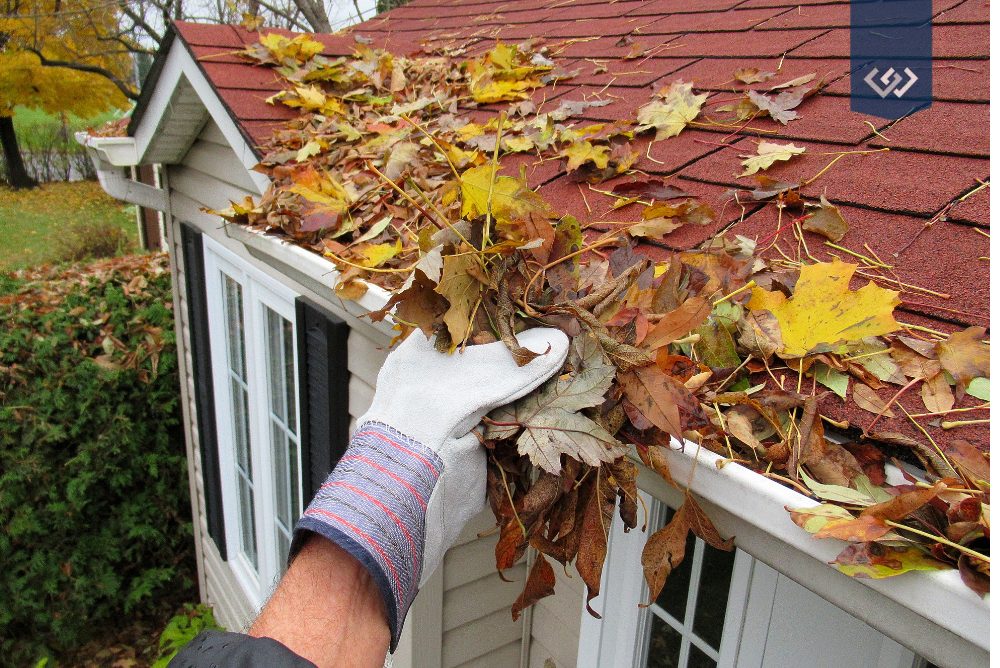Winter will be here soon, and you’ll want to make sure your home is ready for more rain and some snow. While we don’t usually have extremely snowy winters here in the Pacific Northwest, Kitsap County has had some bigger storms in recent years. To avoid being caught off guard and to keep energy bills down, we’ve got a helpful checklist and some resources below.
Weatherproof doors and windows
Frigid air can easily seep into your home through poorly sealed doors and windows. These leaks can reduce your home’s energy efficiency. By simply addressing these, you can increase your energy savings by 5% to 30%. Seal any leaks with weatherstripping or caulking, both from the inside and outside. Additionally, you can use heavy curtains and/or a door sweep to keep warm air inside.
Live in an older home? It may be time to invest in double-pane windows and/or new insulated doors.
Check your gutters and roof
Your home’s gutters drain water away from your house. So, make sure they’re clear of leaves, twigs, and more. To avoid any flooding, make sure your downspouts are pointing away from your home’s foundation. Examine your roof, looking for missing shingles or any areas that need to be secured or patched. If you’ve worked with one of our Windermere agents, they can give you a helpful directory with recommended local vendors, including roofers, repair workers, and gutter pros.
Store or properly cover outdoor furniture
Make sure you have durable covers for outdoor furniture or store it properly indoors if possible. If you have a grill or outdoor kitchen, make sure that it’s sufficiently protected from the elements. Move any potted plants or decor that might be tipped over or damaged in high winds or a bad storm.
Protect your garden
Here in Kitsap County, we are part of zone 8b for gardening. The Almanac recommends adding compost in late autumn. This will let the soil soak up those nutrients during the winter. Next, add a light layer of straw or mulch. This protects spring and summer bulbs and prevents soil erosion, nutrient leaching, and weed development.
Clean chimneys and fireplaces
Cleaning your chimney and fireplace must be a high-priority task on your winter home maintenance checklist. You don’t want critters using it or debris blocking it, which can lead to all kinds of hazards. If you have a gas fireplace, have a professional inspect gas lines and vents and make needed repairs. Also, remember to close the fireplace damper when it’s not in use to keep out drafts and save energy.
Inspect your furnace
Check the furnace filter and replace it if needed. ENERGY STAR recommends changing the filter every few months and says a professional should check your furnace annually. You’ll want to do this now before heating experts get overloaded with cold-weather-related emergencies.
Take steps to prevent frozen pipes
Nobody wants to deal with frozen pipes and water damage. According to the Insurance Institute for Business and Home Safety (IBHS), burst pipes are one of the most common causes of property damage in winter. Frozen pipes are most likely to occur below 20° F. However, this can still happen above that temperature, especially if you have uninsulated pipes that run through an uninsulated space. Consumer Reports has a list of tips, which include:
- Keeping the garage door closed, especially if you have water supply lines in the garage.
- Let cold water drip from a faucet connected to exposed pipes.
- Keep the thermostat set to the same temperature during the day and night.
- Insulate pipes, which costs a few dollars at your local hardware store.
- Add insulation to attics, basements, and crawl spaces to maintain higher temperatures in those areas.
Prepare for possible floods
This step may seem a bit extreme if you’re new to our area. But Kitsap County has almost 300 miles of shoreline. Flooding is the most common hazard here. From prolonged rains to King Tides, it’s important to be prepared. That’s why we had to include it in this winter home maintenance checklist. Consider buying flood insurance if you haven’t. If you’re in a flood zone, have sandbags on hand. Kitsap County does not distribute them. Here’s more info about how to prepare for floods.
Focus on emergency preparedness
Emergency preparedness is important for everyone, but this is especially true if your home is more isolated or not on a main road. It may be harder to access in an emergency. Also, waterfront homes are often more susceptible to wind or water damage. Make sure you have an updated emergency supplies kit, including water, food, first-aid supplies, any necessary medications, flashlights, and a portable cellphone charger or power bank. Check out these 14 steps to prepare for a winter storm.
Take these additional steps for waterfront properties
If you own a waterfront property, you’ll also want to:
- Inspect your boat lift and dock and make any necessary repairs before a storm hits.
- Properly inspect, prepare, and store any water vehicles.
- If your property has a seawall, have it inspected to make sure it’s still in good condition.
Have any other questions about winter home maintenance? Feel free to reach out to one of our local experts.
 Facebook
Facebook
 X
X
 Pinterest
Pinterest
 Copy Link
Copy Link
